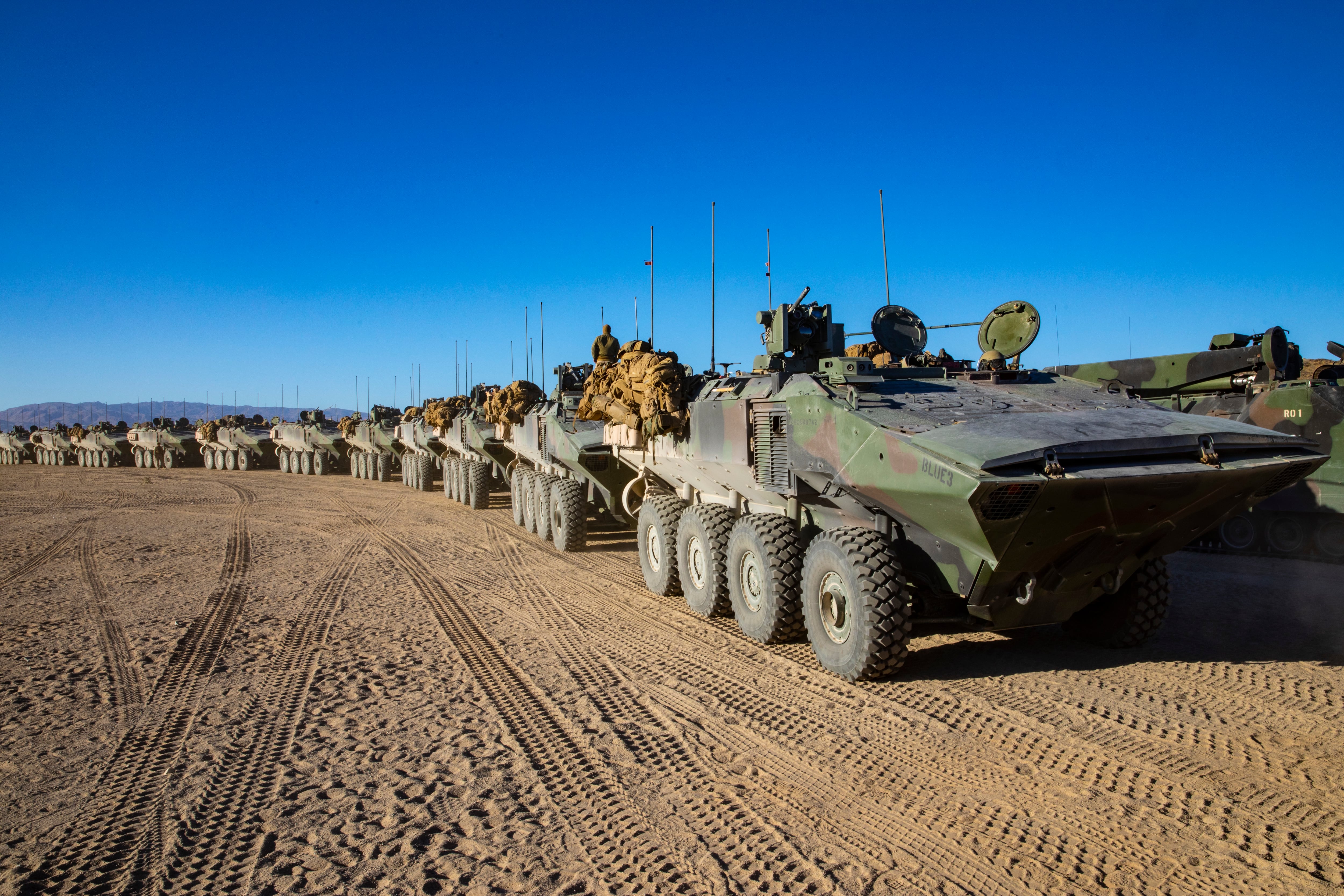The Marine Corps’ newest combat vehicle is back to amphibious operations ― but only in protected waters.
After one Marine amphibious combat vehicle rolled over in high California surf and one became disabled on July 19, “out of an abundance of caution, the Corps ”paused all amphibious combat vehicle operations.”
On Wednesday it announced that ban lifted on July 22, but that the ACV still is staying off the ocean and surf, for now.
“After initial review of the factors involved” in the incident, Headquarters Marine Corps in Washington determined the vehicle was safe to use in protected waters to sustain “crew proficiency and meet entry-level training requirements,” Headquarters Marine Corps Spokesman Capt. Ryan Bruce told Marine Corps Times in a Wednesday statement.
RELATED

Video posted by the U.S. Naval Institute shows the vehicles in the choppy white-cap sea conditions that day.
The July 19 incident did not injure any Marines or sailors, the Marine Corps said.
Deputy Commandant for Plans, Policies and Operations Lt. Gen. David J. Furness said that the pause was “the right thing to do.”
“A pause on ACV waterborne operations will give us time to conduct an investigation, learn from this event, and ensure our assault amphibian community remains ready to support our nation,” he said at the time.
Protected waters include the Area 21 and Del Mar Boat Basin on Camp Pendleton, California. Land operations, including live fire ranges, remain authorized, Bruce said Wednesday.
In September 2021 the new vehicle also had a safety pause, which was resolved in January following a towing system modification.
A first deployment for the ship-to-shore connectors, integral to the Corps’ new fighting plan, is scheduled out of California later in 2022, Marine Corps Times previously reported.
Andrea Scott is editor of Marine Corps Times. On Twitter: @_andreascott.
Andrea Scott is editor of Marine Corps Times.




